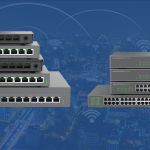Session Initiation Protocal (SIP) Trunks have come a long way in the last few years. Provision and availability of SIP trunks has grown enormously, as has the quality of that provision. For many, SIP trunks have become a much needed solution to age-old issues of cost and flexibility, for others the technology is considered less established or reliable than existing trunk types. Whether SIP trunks are the best form of comms connectivity for a business is subject to many factors – but the growth in this sector suggests that many businesses already look to SIP trunks as a solution, and many more will in the future.

Alexis Argent VoIPon Solutions
We’ve been using VoIP for ten years, initially linking our UK and US offices by SIP – using a gateway and traditional circuit switched PBXs at either end. We found that the technology improved rapidly, allowing us to quite quickly move completely to VoIP for incoming and outgoing traffic. Our experience is of a generally flawless service, and with many technological obstacles disappearing in the last few years, coupled with improvements in connections and business grade routers, we find our customers sharing the same view.
Benefits
The benefits of SIP trunks often lie in the areas where existing trunks fail – principally around those afore mentioned issues of cost and flexibility. For small businesses, the combined headaches of upfront connection costs, high monthly charges, protracted setup times and long contracts are too much to bear – especially on lower turnovers or start-ups. We have found that the younger generation of business owners are also less likely to be concerned about trying a newer technology, especially when this frees up cash and time. This can make SIP trunks very appealing to small business.
Where a business has already made good provision for internet – for example through leased lines with SLA agreements – ISDN and traditional phone line costs can be seen as superfluous and an expense to be rationed. Removing hundreds or thousands of pounds of overheads, along with restrictive contracts, is extremely appealing.
The benefits of using SIP don’t stop there. Call rates are usually substantially cheaper; it’s easy to make configuration and routing changes; remote offices can be linked with no setup or call costs; redundancy and extra capacity suddenly become easy and very cost effective to implement.
If your workers are snowed in, departments are geographically spread, or you just want to provide more flexi options, SIP could be the answer. Staff can be anywhere on the Planet, connection allowing. Commonly used VPN setups often form the basis for remote SIP, allowing the use of both soft and hard phones.
Simple softphones for iOS and Android now mean that calls can be made and received from almost any smartphone. SIP calls are becoming simpler and more accessible almost by the day.
The reduced setup costs and times mean that even trialling SIP trunks is convenient. It’s not necessary to make a complete shift; outgoing calls, for example, can be easily moved to SIP with no disruption to incoming business numbers. Relatively inexpensive VoIP gateways can be used to integrate new SIP trunks with your current analogue/ISDN system. Adding additional capacity to an existing setup is simplified without the need to interrupt the existing system and can be achieved in a matter of minutes.
Features
Most SIP trunk providers will offer additional services. In the case of VoIPon, we make it possible to make changes to SIP settings through our website 24hrs a day at no cost. When coupled with VoIP numbers, other free features such as voicemail, fax to email and ring groups can be easily enabled and managed. These types of services are well suited to smaller businesses who are willing and able to take on the management of their communications themselves.
For larger businesses, the additional features are of less significance – with uptime, and quality of service paramount. Good quality SIP trunks are what they need once reliable net connections are in place. The in-house PBX then provides access to additional features such as fax, call-hunting, IVR and the other functionality that’s required. Good quality SIP trunks mean that managing comms in-house can become a reality. The management of the PBX can then be done internally, rather than relying upon an outside telecoms specialist.
The purchasing or issuing of SIP trunks is typically a low-cost, almost instantaneous activity. This alone makes SIP trunks superior to other types of trunk in versatility, flexibility and cost. Imagine BT laying on 10 additional lines in minutes – rather than days, weeks or even months?! The speed and convenience of SIP is unparalleled.
Confidence in Moving from ISDN
For many new and young businesses, ISDN was never an option. They are simply looking to maximise their investment in broadband and keep costs and contracts to a minimum. With the higher quality provision available through higher speed cable and fibre services such as BT Infinity, along with improved upload speeds, connection reliability is less and less of an issue by the day.
For many larger businesses, moves have already been made to increase internet throughput for web, email, video conferencing, remote backup and VPN traffic. The same reliability needed for these services can be easily extended to ensure robust SIP connections. We find that ITSP downtime is rarely an issue; most technical issues are solved with adequate internet and PBX capacity at the client end.
Users of ISDN typically have greater restriction on pricing and contracts, while in-house PBXs are likely to require more hardware than a SIP solution in order to physically connect to, and interpret voice data. In the long run, many ISDN users are not only considering cost – but also support and availability as ISDN becomes increasingly under threat.
Whilst there is understandably some hesitation moving to SIP from established businesses with existing ISDN setups, we find this hesitation simply doesn’t exist in businesses seeking brand new VoIP solutions. With a blank canvas, we routinely see decision makers choosing to ditch contracts and restrictions in favour of lower cost and faster setup with SIP.
It is, however, important to ensure the internet connection will support the required capacity, whether it’s two channels or two hundred. At higher levels of voice traffic it may be best to run a dedicated connection.
Cost Savings
Anyone and everyone should expect cost savings from a move to SIP trunks. Costs can be saved on equipment, contracts, external consultants, connection charges, calls between sites and remote staff and of course on the call charges themselves.
Where internal PBXs are already in use, the benefits of moving from ISDN to free or low cost SIP trunks are still likely to be appealing.
Business Continuity
In the traditional world of pre-packet telecoms, circuit switched networks historically offered extremely reliable and robust uptimes; with customers routinely expecting the ‘five 9s’ (99.999% uptime). This level of reliability is of the utmost importance regardless of the system a business chooses. Customers are far more likely to tolerate delays or interruption to email or web services than they ever would with voice. Getting a dial tone each and every time you pick up the phone is a fundamental expectation. Packet switching phone systems have much to live up to – but this shouldn’t present a problem.
With good, reliable ISPs and ITSPs, protected Quality of Service in routers and a robust PBX, there’s no reason why you can’t see the levels of reliability in VoIP that you would expect in traditional systems. Even so, many users of SIP feel that occasional issues are more than compensated for by the other benefits.
With small setup times and virtually instantaneous settings changes, SIP trunks can mean the difference between days of traditional delays and no delays at all, between struggling to divert calls and services and simply organising this at the click of a mouse.
Security
As with any online data, security is an issue. Furthermore, with targeted theft of intellectual property and commercial secrets on the increase, securing your communications data is important. It is also important to combat the issue of system hacking and call credit theft. The vast majority of SIP account hijack attempts can be countered with strong and individual passwords on trunks and extensions as well as properly configured firewalls (with restrictions on ports and IP ranges).
As with any in-house comms solution, a degree of trust is placed in those managing and operating it. Proper safeguards and precautions should be applied as with any other system that’s used to transmit important and sensitive information.
From an external aspect, SIP is potentially vulnerable to risks that can be applied to any unencrypted internet traffic. However, these can be adequately defended against using encryption methods and protocols such as Secure RTP or IPSEC over VPN for remote connections.
With increasingly few technical limitations and issues, we believe SIP trunks are a major force in the future of business communication. In today’s business environment, few decision makers can ignore the appeal of a technology that reduces costs, provides freedom from contracts and a level of flexibility second to none.






